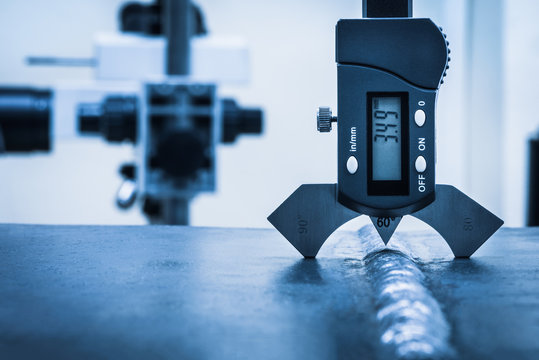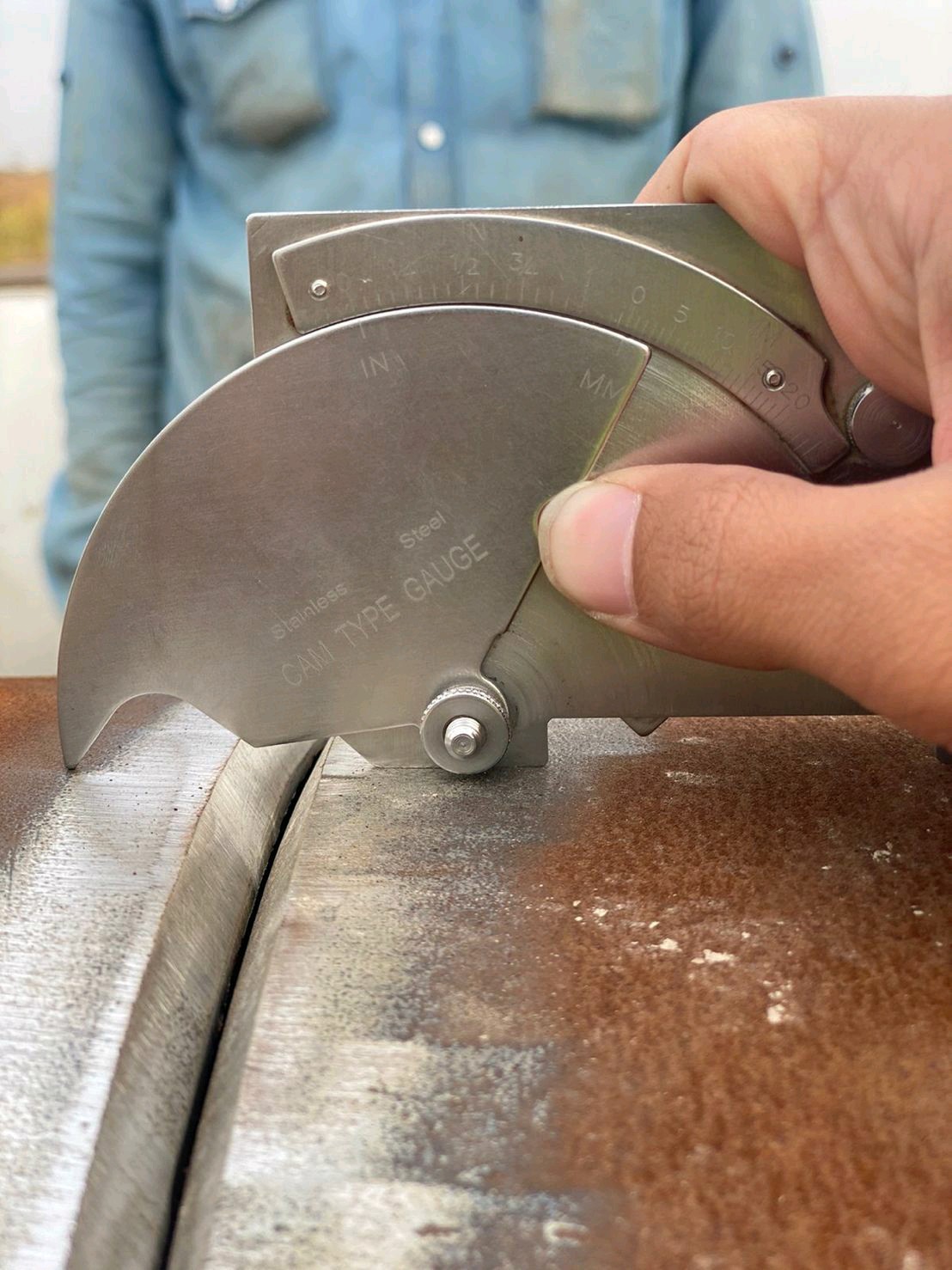How Welding Inspection Madison Ensures Quality and Safety And Security in Fabrication
Discovering Advanced Devices and Techniques for Accurate Welding Assessment
In the world of welding assessment, the search of precision and dependability is paramount, spurring the growth of innovative tools and approaches. Technologies such as phased variety ultrasonic testing and digital radiography are reinventing flaw discovery, using exceptional precision in characterizing welding flaws. Additionally, laser scanning advancements and automatic evaluation systems, furnished with expert system, are redefining the landscape by reducing human error and improving security procedures. As these sophisticated techniques proceed to progress, they guarantee not only to change evaluation techniques however additionally to increase fascinating inquiries about the future of quality control in industrial applications.
Ultrasonic Testing Developments
Ultrasonic testing developments often stand for the center of innovations in welding examination modern technologies. These innovations have actually dramatically boosted the ability to spot and evaluate discontinuities within bonded structures, ensuring improved stability and security.

Furthermore, innovations in software application formulas for data analysis have actually enhanced the precision of defect detection and sizing. Automated ultrasonic testing systems currently supply high-resolution imaging, enabling thorough evaluations of weld top quality. These systems are typically incorporated with advanced visualization devices, which promote the analysis of results.
Radiographic Inspection Techniques
While ultrasonic testing technologies have established a high criterion in non-destructive examination, radiographic evaluation strategies continue to play an essential function in welding examination by providing special understandings right into product stability. Radiographic screening (RT) utilizes using X-rays or gamma rays to penetrate materials, creating a radiograph that aesthetically represents the internal structure of a weld. This imaging capability is vital for discovering subsurface flaws such as porosity, additions, and splits that might not be noticeable via surface evaluations.
The process includes putting a radiation resource on one side of the weld and a detector on the contrary side. Variations in material thickness and density impact the attenuation of the rays, creating a different picture that exactly defines problems. RT is specifically helpful for checking thick sections and complicated geometries where various other approaches may fail.
In spite of its effectiveness, radiographic examination should be carried out with stringent adherence to safety and security procedures because of the unsafe nature of ionizing radiation. Moreover, the analysis of radiographs needs competent employees, as the high quality of the analysis straight affects the reliability of the examination. Ongoing innovations in digital radiography are boosting picture clarity and analysis efficiency, enhancing RT's vital duty in guaranteeing weld top quality.
Laser Scanning Developments
Embracing laser scanning technology in welding evaluation has actually changed the assessment of weld quality and integrity. Unlike traditional evaluation techniques, laser scanning provides fast information procurement, significantly improving the performance and precision of weld analyses.
Laser scanning breakthroughs have actually resulted in significant improvements in characterizing and detecting surface imperfections such as porosity, absence of blend, and damages. The high-resolution data makes it possible for assessors to do extensive analyses, guaranteeing that welds meet stringent sector criteria. In addition, this approach supports the development of digital documents, helping with long-term quality control and traceability.
Additionally, laser scanning modern technology incorporates perfectly with software options designed for automated defect discovery and assessment. The resultant information can be quickly shared and reviewed, advertising collaborative decision-making procedures. As markets remain to demand greater standards for weld quality, laser scanning stays at the forefront, using exceptional precision and effectiveness in welding inspection.
Automated Evaluation Systems

Automated examination systems use the advantage of uniformity, removing human mistake and subjectivity from the evaluation process. They are developed to operate in numerous atmospheres, from production floors to remote field websites, guaranteeing extensive coverage. Welding Inspection Madison. These systems can be set to adhere to specific welding standards and standards, supplying comprehensive records and paperwork for quality assurance purposes
In addition, the combination of cloud-based platforms promotes the storage and evaluation of large amounts of examination information. This allows fad analysis and anticipating maintenance, enabling producers to next address prospective concerns before they escalate. The fostering of automated assessment systems is a critical action towards boosting the integrity and effectiveness of welding processes in industrial applications.

Enhancing Safety And Security and Efficiency
A significant aspect of enhancing security and performance in welding inspection lies in the integration of ingenious innovations that enhance procedures and alleviate dangers. The fostering of sophisticated non-destructive testing (NDT) techniques, such as ultrasonic testing, phased selection ultrasonic testing (PAUT), and radiographic testing, plays a crucial duty in making certain architectural integrity without jeopardizing the security of the workers involved. These techniques permit comprehensive evaluations with minimal downtime, reducing prospective dangers connected with important link traditional approaches.
Moreover, the application of real-time data analytics and artificial intelligence algorithms has actually transformed the way evaluation data is interpreted. By utilizing predictive analytics, prospective flaws can be determined before they show up into essential failings, guaranteeing prompt interventions and upkeep. This positive approach dramatically improves functional effectiveness and safety and security in welding processes.
Furthermore, remote inspection innovations, consisting of drones and robotic crawlers furnished with high-resolution cameras, allow assessors to analyze hard-to-reach locations without subjecting them to hazardous conditions. This not only boosts evaluation accuracy yet also decreases human risk. By leveraging these sophisticated devices and approaches, industries can accomplish greater safety and security criteria and functional efficiency, ultimately resulting in more trusted and sustainable welding examination techniques.
Conclusion
The integration of innovative tools and methods in welding examination substantially boosts flaw detection and guarantees architectural integrity. These advancements not just increase inspection performance however also contribute to improved safety and top quality assurance in commercial welding applications.

Ultrasonic basics testing advancements frequently represent the leading edge of developments in welding examination technologies.While ultrasonic screening advancements have established a high standard in non-destructive assessment, radiographic examination methods proceed to play an integral function in welding examination by supplying special understandings into material integrity.Welcoming laser scanning technology in welding evaluation has actually reinvented the assessment of weld high quality and stability. As sectors proceed to require higher standards for weld high quality, laser scanning stays at the leading edge, supplying unrivaled precision and effectiveness in welding assessment.
Automated inspection systems use the benefit of uniformity, removing human mistake and subjectivity from the examination procedure.